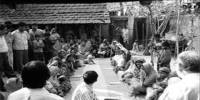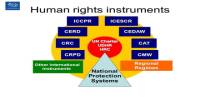Main purpose of this report is to analysis Gender Discrimination in Bangladesh. Other objectives are to explore the scenario of gender discrimination in Bangladesh and to assess the effects of gender discrimination on our Economy and GDP. Finally suggest policy implications to reduce the effects of gender discrimination on our Economy and GDP, also find out some recommendation about Gender Discrimination.
Introduction
Dialogue over the issue of Gender Discrimination is not a recent phenomenon. During the 1950s and 60s, the emphasis on women was on their reproductive roles as mothers and homemakers. This approach was based on Western stereotypes of the nuclear family in which women are economically dependent on the male breadwinners. In the early 1970s, researchers began to focus on the division of labor based on sex, and the impact of development and modernization strategies on women. The WID (Women in Development) concept came into use in this period. The philosophy underlying this approach is that women are lagging behind in society and the gap between men and women can be bridged by remedial measures within the existing structures. The WID approach started to recognize women as direct actors of social, political, cultural and working life. Therese Blancher mentioned gender disparity of Bengali society as:
The birth of a boy is always greeted with joy. The birth of a girl is welcome when it is a first child (the first fruit which announces the fertility of the plant), or when there are already boys and no girl in a family. Otherwise, it is often received with resentment. Boys represent wealth, but girls are seen as a cumbersome responsibility. They are born to be given in marriage. This will require a dowry and impoverish the family most prefer a large number of sons. The reverse situation is a source of resentment and anguish (1996: 50).
Both man and women works for the society but especially women all over the world perform multiple roles in productive labour (paid and unpaid), which is not reflected in their official measures of economic activity. Their access to equal pay for comparable work, family benefits, financial credit and the right to own and inherit property are either nonexistent or are limited by law and traditional patriarchal constraints that continue to undermine female economic life. The traditional gender division of labour treats domestic work as a voluntary contribution by women and perpetuates inequity at every income level. Discrimination is playing a crucial role in human society, which hampers the overall development of a country.
Statement of the Problem
Allah has created both male and female in this beautiful world. In Islam there is no discrimination between male and female as creation. As a human being, their right and respect is equal. In Bangladesh, about 50% of population is female. This huge population can contribute to the development of the family, society and country. But in Bangladeshi family there is unequal treatment towards boys and girls, male and female. Bangladeshi family and society is patriarchal and women are considered inferior to men; husband have the right to dominate them, if necessary through the use of force. The head of the family is male; he dominates decision making in all affairs of the family. Sometimes he beats and maltreats with his wife. Most parents like male child than female child. Female child get less food than male child. Their literacy rate is low than male. They suffer from malnutrition and victims of different kind of disease. About 50% female children get married before they reach 18 years (legal age) (age of physical and mental maturity). Beside pregnant women do not get sufficient food like male. As a result mother gives low birth weight child who is weak and meritless and dependable to others and so the country will not get intelligent and healthy citizen to develop her. Human mind will not be developed freely. Actually gender discrimination has long-term negative effect on female child. It hampers their physical mental and physiological growth. So gender discrimination is a problem.
This gender discrimination is a major component while we measure the Gross Domestic Production (On Our Economy) of our country. Gender based discrimination has a great effect On Our Economy.
Therefore a study on gender discrimination is necessary to establish equality in the family and society as well as to measure its effects on On Our Economy. For this equal treatment to girls and boys, male and female will help to develop the country.
Working definition
Gender
When discussing gender, we generally refer to the social differences and relations between men and women, which are learned and transformed. The term gender does not replace the term sex, which refers exclusively to biological differences between men and women. Gender has been defined as the different roles responsibilities and expectations of women and men in societies and cultures which affect their ability and their incentive to participant in development process and lead to a different project impact for women and men. (European Commission -1993).
Discrimination: Disparity inequality
Gender Discrimination:
Gender Discrimination means to justify individual’s status and position in society in gender perspective. It denotes that individual’s role, activities, performance, resource ownership etc. are to be addressed by gender perspective.
Our Economy & Gross Domestic Product (GDP)
The market value of the aggregate of all final goods and services produced by the people of a country in a certain period of time (usually one year) is called On Our Economy of a country. Our total economy mainly depends on GDP.
Review of Literature
There is some related publication regarding this topic such as Hamid. S. Why Women Count,1996, University Press limited, Haider, Raana. ‘A Perspective in Development: Gender Focus’, University Press Limited 2000, Todd, Helen,Women at the Center, University Press limited, Khan Ziaun Nahar, Khanam, Rashida, Poverty, Women and Rural Development in Bangladesh, Golbalisation and Gender edited by Rehaman Sobhan & Nasreen Khundker, University Press Limited 2004, D. Lynn, Lisonoff Laurie, W. Nan, The Women, Gender and Development, Halim, M. Abdul, Women Crisis Within Family in Bangladesh.
Objective of the Study
The objectives of the study are as follows:
- To explore the scenario of gender discrimination in Bangladesh;
- To assess the effects of gender discrimination on our Economy and GDP.
- To suggest policy implications to reduce the effects of gender discrimination on our Economy & GDP.
Scope of the of the Study
Gender disparity at family level in Bangladesh is an important topic. It covers a great area. I tried my best to analyze the different issues on gender disparity at different level. Also to explore its effects on On Our Economy and suggested policy implications to measure it. In this study secondary data plays a significant role. I have collected related data of boys and girls, Female and male household and wives (brides) mother-in-law, and father-in-law, from books, Internet, journal, daily newspapers etc.
Methodology
I have collected data from secondary sources mainly. Data has been collected through visiting and reading method. The data largely came from BIDS, BANBEIS, Internet, and different types of books and journal and various government and non-government reports. I have also been depend on valuable advice from my honourable supervisor and others NAEM facilities. I have also been depends on focus group discussion among trainees in NAEM to openly discuss and find out sensitive issues about gender disparity and its effects on economic aspect.
Different Aspects of Gender Disparity in Bangladesh
The gender roles that a society assigns to its children, men and women affect their access to education and health care, labour force participation, recreation and sports, physical and psychological health and exert longterm effects on the future physical and psychological development of both boys and girls and mother gender disparity affects reproductive health of women.
Education
Parents send their children at school but more girls than boys are attending both primary (1 -5 class) and junior secondary (6-9 class) levels of education, while at higher level (10+), they are at par:
- 48% boys and 51 % girls attend primary school;
- 16% boys and 20% girls attend junior secondary school;
- 7% boys and 7% girls attend secondary level school.
In the primary school age group (6-9 years), 87% boys and 91% girls are enrolled in primary school. Significant improvement in girls’ education is ostensibly due to the female secondary stipend program initiated by the Government.
A sizeable proportion of children do not attend school at all, and among those who attend school a significant proportion dropout after a few years of schooling. A comparison of schooling status between boys and girls indicates that more girls (78%) are currently in school than boys ((71 %) and overall dropout is less among girls (16%) than among boys (20%). In primary level, dropout is higher among boys (16%) than among girls (10%). Attendance for girls is higher and dropout rate lower compared to boys in the 10-14 age group as well. However the rate is particularly high at the age 15-18 because of employment of child labour and marriage of girls. Both boys and girls cite lack of financial resources as the prime reason for dropping out from schools. As regards other causes, boys and girls give different reasons reflecting their gender role construction. While a large proportion of boys did not currently attend school as they have to help father in agriculture/ business or have to earn for the family, corresponding proportion of girls not going to school for the same reason is very low. On the other hand, a much higher proportion of girls than boys are not in the school because of lack of school facility nearby, lack of interest of parents in girl’s education at marriageable age, requirement of Purdah and need to help mother in household work. Among boys not currently attending school, almost half the boys (47%) are currently employed in gainful economic activities and a proportion (16%) of them help their fathers in Cultivation in the fields. More than four-fifths of boy’s aged 15-18 not attending school is either employed or working with father. There is wide prevalence of child labour as more than half of the boys are either employed or helping their fathers. On the other hand, vast majority of girls not attending school (75%) help mother in household work. Corresponding proportion of boys helping mother is 8% while only 10% girls work for earning or help father. As regards educational aspiration, more than half of the girls and parents desire to complete up to secondary level of education, while only a few would like to Study up to
Bachelor’s degree level and above. In comparison to girls, the expected level of education for boys was much higher; two-fifths of boys desire to Study up to Bachelor’s level and above. Both boys (87%) and girls (61 %) and parents fear poverty and lack of financial resources to be the main impediment to the fulfillment of their desire for education. For girls, marriage and unwillingness of parents is the second most serious constraints. This confirms prevalence of child marriage. Adhering to marriage around three-fifths of boys and a quarter of girls believe that boys are in need of more education than girls because they have to take care of the family including parents. Many boys and girls reported that high school boys and bad boys of the locality disturb and harass girls. Before already having lessons in violence against women.
Food
In our country we saw many discrimination on many aspects of gender-based treatment. On food aspect what we generally observed that female get less food then male. Also we saw that many housewife of our country takes their food after completing of eating of all the members of the family. So in many times she takes less food even often not take anything. Incase of male its not occurred. As a result it hampers their physical and mental growth as well as reproductive health and lessen their capability of economic activities.
Illness and Health Care
Discrimination on healthcare aspect is also a great problem in our-country. In this regard we saw that mail child get more opportunity of healthcare than female child. Health status of young children and mothers is influenced greatly by economic, social, cultural and individual factors.
Children and mother are particularly vulnerable to disease and death. In a Study (conducted by an NGO) showed that girls has slightly higher incidence (45%) of diseases than boys (39%) especially at older ages. Parents are more careful about the health of sons than daughter (51 % & 49%).
Recreation
On recreation regard we saw that discrimination largely effect the male and female mental and physical fitness. In this study most of the boys take part in games. On the other hand lesser proportion of girls (17 %) take part in sports. This may be due to their parent’s gender a based attitude on them.
Participation of Women in Family Decisions Perceptions Children
In Bangladesh, men enjoy privileges and rights over women in important family decisions. But more than three-fourths of the children maintain that important family decisions including matters like education/treatment of children, son’s/daughter’s marriage, major purchases/sale (land/valuable items) should be taken jointly by the father and mother. The opinion of the respondent children that before taking any major decision the husband should consult the wife is likely to have a salutary effect on empowerment of women.
Women and Employment
In order to present the results simply, seven broad categories of activities were grouped under two different heads; namely (a) household work and (b) productive work. Household work consist of:
- care of small children;
- household maintenance activities, namely food preparation, cleaning, carrying water, drying paddy and other crops, etc. and
- collection of firewood, cow dung etc and sewing, etc.
Productive work comprises of:
- work outside agriculture such as construction work, repairing the home and household tools or implements, fishing, petty trading such as operating a small shop;
- animal care and feeding, herding and bathing of animals;
- field operations connected with crop production, cleaning land, Ploughing, sowing weeding, irrigation and harvesting etc. and
- work outside home but not directly productive such as purchase of inputs and other essentials, marketing of products, etc.
It is to be noted that participation rate of girls was considerably higher than that of boys for all the three age groups. This may be explained by the fact that girls participate mostly in household works with lisped for having rest and free time. They have work almost every day throughout the year.
Division of Labour in Gender Perspective
Division of labour is another important issue on gender disparity. Most of the girl & female are engaged in household work whereas boys do productive works. In so far as, by definition, household work is performed within or around the household and productive work is done outside, the sharp division of labour between the boy and girl respondents represents traditional gender role construction between men and women. Traditionally women in Bangladesh are required to confine their activities to household chores and work inside the homestead (bari) including threshing, drying, processing and storage of grains, looking after seeds, growing fruits and vegetables, plastering mud walls and floors, sewing clothes, knitting fishing net; and these activities are downgraded as without monetary or economic value and without contribution to subsistence and livelihood of the family. On the other hand, work of boys in the field on grain production and off-farm activities carried out by them away from home directly contributes to subsistence and livelihood of the family and is accordingly looked upon as of monetary and economic value. Women and girls are thus treated as dependent on and subordinate to men while men and boys are exalted as breadwinner and future prop and security of the family. The work boys do as children, the earning power they achieve as adults and the support they provide throughout parents’ lives• (including old age) are all very vital for survival of the family in the existing socio-economic condition. The differential contribution of sons and daughters thus provide the economic basis for favouring sons over daughters.
Down and Gender Construction
Boy and girl respondents were asked about various aspects of dowry and it became evident that they are aware of the practice at their age. Their opinions on various issues may be summarized:
- Position of the girl is undermined because of dowry practice: 62% boys agree, 64% girls agree.
- Girl’s position is not affected because of dowry practice: 10% boys and girls agree
- Quarrel/unrest” in the family is mainly caused by dowry: 82% boys agree, 88% girls agree. Socio-economic status of the household does not have any perceptible impact on the attitude of the children towards dowry.
- Dowry is a social evil that is a main cause of violence against women: 84% boys agree, 86% girls agree.
- Respondent boys themselves would demand dowry at the time of their ‘marriage: 21 % boys would ask for dowry; because giving/taking dowry is a social norm’, 71 % boys say; Everyone takes dowry, 63% boys say; No respect without dowry, 9 % boys sad; To acquire luxurious items’ 10% boys say.
Respondent girls would need dowry to be paid to their respective bridegrooms when; they get married
- 39% girls agree; because
- no marriage can take place without dowry”, 94% girls say;
- dowry payment is a social norm’ 29% girls say;
- it is not possible to get a good bridegroom without dowry”, 26% girls say;
- no respect in in-laws’ house without dowry’, 22% girls say. When children were asked whether any of their family members have suffered due to dowry demand, only 4.4 per cent of boys and a similar proportion of girls (4.5%) answered in the affirmative. But there is large variation in children’s responses by economic condition of the household. More members from poorer families than the richer ones seem to have suffered due to dowry demand.
Effects of Gender Discrimination On Our Economy
Gender discrimination has immense effects on production of goods and services of any country. In Bangladesh about 50% of the population is female. This huge population can contribute to the development of the family, society and the country. But in Bangladesh there is unequal treatment towards boys and girls, male and female creates hazard on economic aspects. Bangladeshi family and society is patriarchal and women are considered inferior to men; husband have the right to dominate them. The head of the family is male; he dominates decision making in all affairs of the family. Sometimes lie beats and maltreats with his wife. As a result it is quite difficult to reach the desired benchmark of GDP intenns of economic production. The effects of gender discrimination and GDP are as follows:
GDP, our Economy and Education based discrimination
The adult literacy rate in Bangladesh was estimated to be 39.7 percent in 1992, male rate being 47 percent and female rate being 25 percent. The downward bias was the result of the weight age from the very low rates in rural areas where the average literacy rate was only 34 percent, male literacy being 40 percent compared to 23 percent for females. On the other hand urban literacy rate being 71 percent and female 52 percent (BBS-1994). The source of the disparity in literacy rates was apparent when the male: female ratio of students was examined in the different educational institutions (Table-1)
Table 1: Male Female Ratio of Teachers and Students in Educational Institutions.
| Type of School/institution | Teachers | Students |
| Primary | 12:1 | 1.5:1 |
| Secondary | 2:1 | 1.6:1 |
| High School | 7:1 | 3:1 |
| College | 3:1 | 4:1 |
| University (General) | 5:1 | 4:1 |
| Medical College | 4:1 | 3:1 |
| Engineering University | 16:1 | 19:1 |
| Agricultural University | 42:1 | 16:1 |
| Other Prof & technical education | 3:1 | 3:1 |
| Govt. primary training institutes | 4:1 | 1.3:1 |
| Polytechnic institutes | 24:1 | 32:1 |
| Govt. commercial institutes | 13:1 | 12:1 |
| Vocational training institutes | 99:1 | 8:1 |
| Religious schools | 176:1 | 11:1 |
Source: Bangladesh Educational Statistics, 1999, BANBEIS and BBS 2008
Table 2: Literacy Rate in Gender Perspective
| Gender | Literacy rate | Drop out rate | Pupil in Science Study (%) | Share of HH exp. On education (%) |
| Female | 41.5 | 59.0 | 20.0 | 80.0 |
| Male | 50.6 | 50.0 | 40.0 | 60.0 |
Source: BES
In education, literacy rate for women is 41.5 per cent in 1996 and for men 50.6 per cent. The drop out rate is high i.e. 59 per cent for girls and 50 per cent for boys at primary level. Only 20 per cent women as opposed to 80 per cent men are in science education. Household expenditure on education for women is 40 per cent as opposed to 60 per cent for men indicating discrimination against women. Thus education portion of On Our Economy do not work homogeneously on human resource development programs.
GDP, Our Economy Measurement in Rotation to Population and Health Discrimination
On Our Economy is greatly related to population and health disparity aspect. In 1992 population estimates put the population of Bangladesh at 112 million of which 49 percent, that is 54.88 million, were women (Table 1). This male bias was a result of the lower life expectancy of women (55-9 years compared to 56.8 years for men), which is contrary to almost all other countries in the world (BBS 1994). Reasons contributing to this imbalance include lower food intake (men receive 94 percent of the minimum caloric requirement compared to women who receive only 78
percent), the gap between males and females increasing with age (Table 2); higher mortality rates for the girl child (14.8 for girls compared to 1 ).6 for boys per 1000 children); and high maternal mortality rate of 6.50 per 1000 live births compared to 4.20 for all developing countries and 2.90 for world average. This is not surprising in view of the fact that only 40 per cent of pregnant women in Bangladesh receive prenatal care, more than half are anionic, and- only 7 per cent of births are attended by health personnel (UNDP 1994).
Table 3: Population and Demographic Data 1991
| Indicator | Total | Male | Female |
| Population (million) | 112.00 | 57.12 | 54.88 |
| Life expectancy (years) | 55.40 | 56.40 | 55.40 |
| Infant mortality rate per 1000 live births | 94.00 | 98.00 | 91.00 |
| Child (1-4 years) mortality rate per 1000 children | 14.20 | 13.60 | 14.80 |
| Maternal mortality rate per 1000 live births | – | – | 6.50 |
| Fertility Rate | – | – | 4.33 |
| Mean age at marriage (years) | – | 25.10 | 18.00 |
| Population widowed/divorced | – | 0.80 | 8.20 |
| Calorie intake as % of minimum requirement | 86.00 | 94.00 | 78.00 |
Source: DDS 1991, BBS 1989, BIDS 1992
Food Based Discrimination and GDP, Our Economy
In our country we saw many discrimination on many aspects of gender-based treatment. On food aspect what we generally observed that female get less food then male. Also we saw that many housewife of our country takes their food after completing of eating of all the members of the family. So in many times she takes less food even often not take anything. Incase of male its not occurred. As a result it hampers their physical and mental growth as well as reproductive health and lessen their capability of economic activities.
Table 4: lntrafamily Distribution of Food in Rural Areas Jdaily intake in gms/person).
| Age group in years | Food in gms/person | |
| Male | Female | |
| 1-3 | 259.4 | 263.4 |
| 4-6 | 527.2 | 485.3 |
| 7-9 | 604.0 | 542.5 |
| 10-12 | 656.3 | 614.2 |
| 13-15 | 797.8 | 701.3 |
| 16-19 | 819.2 | 756.3 |
| 20-39 | 927.7 | 775.4 |
| 40-49 | 965.8 | 693.9 |
| 50-59 | 903.4 | 640.8 |
| 60-69 | 900.4 | 705.4 |
| 70 and above | 721.4 | 590.2 |
Source: BIDS 1992.
Gender Discrimination in Relation to Reproductive health and GDP, Our Economy
Most of the causes for the imbalance are entrenched in social and cultural practices of gender discrimination, many aspects of such discrimination increasing with the level of poverty of the households. Giving preferential treatment to the, boy child negates the advantage the girl infant has at the time of birth (the infant mortality rate for girl infants is 86 per 1000 live births compared to 90 for boy infants). The low age at marriage (17 years) and at first childbirth (18 years) of girls who, because of lack of nutrition, have lower growth rates than boys (BIDS-1992) lead to pre and postnatal complications; frequent pregnancies within short intervals; and the practice of not reporting illnesses of the women of the household until the problem reaches serious proportions (UBINIG 1989) all contribute to the disadvantageous position of women. In spite of the high maternal mortality rate the fertility rate for women is as much as 4.33 in rural areas, with only 31 percent of married women below 50 years of age using any form of contraceptives. Of these women 24 percent use modern methods (the most widely accepted being tubectomy and the oral pill) and 7 percent use traditional methods. The 30-39 year old currently married women were reported to have the highest prevalence of contraceptive use (BIBS 1991).
The high fertility rate is an indication of women’s lack of decision-making power in the household because (a) it has been observed that women themselves preferred two to three children and were satisfied with the birth of one live male child (NIPORT 1990), and (b) that of all married women surveyed in a study, 25 percent reported that their last birth was unwanted by the women (BFS). The reasons for high fertility also include the low level of socio-economic development in the country; low level of literacy of both men and women; strong preference for sons because of the socio-cultural environment which makes sons legally responsible for the care of elderly parents, especially the mother (Haque1989); high level of infant mortality; and the traditional subservient role of women in a patriarchal society.
*In the study, Rethinking Rural Poverty BIDS 1992, it was estimated that in rural Bangladesh while 7% of boys were categorized, as having normal growth, in the case of girls it was only 4 1 %.
*Under Islamic laws a son is bound to take care of his mother regardless of his own economic situation but is required to take care of his father only if his economic situation enables him to do so. (Haque)
Gender Discrimination in Relation to Labor force and GDP:
Because of the involvement of children in both the agricultural and non-agricultural sectors, especially in the rural areas, the labour force of Bangladesh comprises a population which is aged 10 years and above. The Labour Force Survey 1989 estimated the total population 10 years and above to be 70.8 million of which 50.2 million constitute the civilian labour force. Women comprise 42 percent of the labour force with a refined activity rate of 63.3 percent compared to 85.1 percent of males (Table-5). Female activities in rural areas were 69 percent and male 87 percent. Rates for urban women were however much lower at 28 percent, the disparity arising mainly from a revised definition of agriculture-related work which accounted for unpaid farm and off-arm activities ( Labour force Survey-1989) and which had greater significance for the rural labour force than for the urban.
Table 5: Refined Labour Force Activity Rate
| Region | Total | Male | Female LFS 1989 | Male LFS 1986 |
| National | 74.5 | 85.1 | 63.3 | 9.8 |
| Urban | 52.8 | 74.5 | 28.0 | 14.0 |
| Rural | 78.3 | 87.0 | 69.2 | 9.0 |
Source: Bangladesh Statistical Yearbook 1991 and LFS 2008
Discrimination of Gender by Employment and Its effects on our Economy
It was estimated that 11– conventional Gross Domestic Product were decomposed by gender, 25 percent of the national income would be contributed by women and 75 percent by men. If however own-account production such as house building and collecting fuel, and non-market work, such as cooking, cleaning, washing and childcare, were accounted for, then women’s contribution to national income-would be ‘at least 41 percent 97 percent of the non-market work being performed by women. The lesser contribution by women was the result of a combination of inadequate methodologies leading to underestimation of female labour force participation rates; low female participation in the formal labour force because of low literacy levels and lack of marketable skills; and the differential in male, and female wages in both the agriculture and non-agriculture sectors. This differential was more pronounced in non-agricultural wages where female wage rates were only 42 percent of male rates compared to agricultural wages where women received 70 percent of male wage rates (LFS 1989).
The lack of bargaining power of women is one of the major factors contributing to low female wage rates. This impotence arises level of education and training, low level of skills, the availability of female surplus labour, and a lack of demand for skills developed in their roles as housewives. Even in situations where there is technically no discrimination in male/female wage rates, such as in the public sector, women’s employment opportunities are mainly in low-paid and low-level jobs with limited possibilities of career advancement, which restrict their income earning potentials. A comparison of the mode of wage fixation in rural areas revealed that where 79 percent of male wage labour was based on market price, only 36 percent o women’s labour received market rates, the majority of women labourers (64%) being forced to accept employers’ terms, (Tables-7 and 8).
Table 6: Employment by Industry 2008
| Industry | Total | Male | Female |
| Agriculture | 32571 | 17735 | 14836 |
| Manufacturing | 6975 | 2491 | 4484 |
| Utilities | 17 | 14 | 3 |
| Construction | 661 | 610 | 51 |
| Wholesale & Retail | 4130 | 3909 | 220 |
| Transport, Storage, com. | 1278 | 1268 | 9 |
| Finance, Real-estate, Bus | 238 | 229 | 8 |
| Community, Social, Personal. | 3439 | 2537 | 902 |
| Household Sector | 834 | 588 | 246 |
| Total | 50143 | 29381 | 20759 |
Source: Bangladesh Statistical Yearbook 2008 and Labour Force Survey 1989. Utilities = Electricity, gas, and water.
Table 7: Employment by Status in Employment 2008.
| Employment Status | National | Urban | Rural | |||
| Male | Female | Mal e | Female | Mal e | Female | |
| Self-employed | 43.3 | 10.2 | 41.8 | 11.1 | 43.5 | 10.1 |
| Unpaid family helper | 19.8 | 82.5 | 10.0 | 58.8 | 21.3 | 84.2 |
| Employee | 13.1 | 4.5 | 38.1 | 26.4 | 9.0 | 2.9 |
| Day Labourer | 23.8 | 2.8 | 10.1 | 3.7 | 26.2 | 2.8 |
Source: Bangladesh Statistical Yearbook, 2008
Table 8: Types ofLabour Arrangements (percent of labourers).
| Type of household | Male Labour | Female Labour | ||||
| Daily | Seasonal | Contract | Daily | Seasonal | Contract | |
| Poor | 85.25 | 5.50 | 9.25 | 84.10 | 1.40 | 14.50 |
| Moderately Poor | 75.00 | 7.00 | 18.00 | |||
| Non-poor | 94.00 | 0.00 | 6.00 | |||
Source: BIDS 2008.
Table 9: Terms of Wage Labour.
| Mode of wage fixation | Percent of labour days for | ||
| Male | Female | ||
| Market price | 78.8 | 35.7 | |
| Employer’s terms | 21.0 | 64.3 | |
| Combination of above | 0.2 | 0.0 | |
Source : BIDS 2008
Women’s Role in the Economic Sectors and GDP, our Economy
Income from homestead production is found to range between 28 to 47 percent of total family income, and 50-60 percent of the fruit, vegetables, and spices grown in the homestead by women are sold to meet household expenses, the rest being used for household consumption. The marketing of the produce is however done by only 10 percent of the women engaged in homestead gardening, the participation of women from large farm households being peripheral in marketing activities (BIDS 1992).
Gender Discrimination in Industrial Institute and GDP, our Economy
The industrial sector, which comprises small and large scale manufacturing, contributes 17 percent to the Gross Domestic Product and employs about 14 percent of the labour force. Public sector industrial corporations include the Bangladesh Chemical Industries Corporation which accounts for 25 enterprises, Bangladesh Jute Mills Corporation covering 38 enterprises, Bangladesh Textile Mills with43 enterprises, Bangladesh Steel and Engineering Corporation with 21 enterprises and the Bangladesh Sugar and Food Industries Corporation witli 18 enterprises under it. Female employment in these enterprises is extremely peripheral at 2-3 percent of total labour employed with most of the women occupying low level and low paid position. Only the Bangladesh Small and Cottage Industries corporations records female employment as high as 59 percent because of their many projects dealing with handicrafts traditionally manufactured by women such as embroidered linen. This is a reflection of stereotypical nature of women’s employment opportunities.
Gender Discrimination in Relation to Poverty and GDP, our Economy
Although the incidence of poverty in Bangladesh has declined over the years 55 percent of the population is estimated to be below the poverty line with 27 percent being in extreme poverty (Rahman and Hossain 1995). Furthermore the proportion of women is higher in disadvantaged households, such as wage labour households, those facing food shortage, and those with lower income. Taking into consideration that the sex ratio in Bangladesh is in favour of males this indicates that in absolute terms more women than men are poor. Not only do more women belong to poor households but they also suffer from discrimination in the intra-household distribution of assets including basic clothing. Compared to 53-55 percent of men, 45-47 percent of women own a second set of clothes, a pair of shoes or some warm clothing. This disparity is in evidence even when women are earning members in a household: 55-60 percent of earning women own basic clothes compared to 82-86 percent of earning men (Hamid 1995).
Political Gender Discrimination and GDP, Our Economy
Bangladesh holds the distinction of being the first democratic government in recent history to have women leading both the ruling and the opposition parties. Between 1992-1995 there were only two women in the Cabinet both below the rank of a full Minister of the Government and holding stereotyped portfolios of Women’s Affairs and Culture. Women comprised only 10 percent of the Parliamentary Standing Committees of which only 63 percent included female members. It is therefore not surprising that political parties have on the whole bypassed the larger issues of Women in Development and have failed to address he question-of – wow-en’s equality and emancipation.
Women in the Media and On our Economy
Women vulnerability arises not only out of her biological constitution but also from an environment that perpetuates her subordinate. Her position socially and economically. Her position becomes even more insecure if she loses the protection of a male guardian, be it her father, her husband or even her son.
Women in the Media and GDP, Our Economy
The media is a powerful instrument for information dissemination, shaping opinions, influencing attitudes, creating choices, and projecting images of people, places and situations. The media in Bangladesh include newspapers, journals, periodicals, radio and television broadcasts, loudspeakers (not only in market places peri-urban areas but also in cities and towns), traditional theatres such as jatra, and the more modern theatre plays, more movies and documentaries. There are 394 medialisted8 newspapers an and periodicals published in the Bengali language. (BBS1993).
Conclusion and Policy Implication
Immediately after the Liberation War the Government of Bangladesh concentrated on relief and rehabilitation programmes and in line with this approach in 1974 established the Bangladesh Women’s Rehabilitation Foundation for women who had been widowed, raped, and otherwise made victims of the social upheaval, which characterized the emergence of Bangladesh. The programme’s chief achievements were infrastructure building and staff recruitment. As the need for relief and rehabilitation declined, the focus of development efforts changed towards the need for economic growth. Population control was identified as one of the major instruments for development in Bangladesh and intervention programmes were introduced to restrain the fertility behavior of women. In 1976, in the wake of women’s movements worldwide, the women’s Affairs Division was created and in 1978 it was upgraded 0 the status of a Ministry of Women’s Affairs. Bangladesh thus became the first country in Asia and the Pacific region to have established a full-fledged ministry to deal with women’s development issues. Therefore on account o1′ gender discrimination and its effects on our Economy & GDP the following measurement and policy should be taken that are given below‑
The strategies covered the following issues:
- Designing and putting in place a more responsive WID machinery at the central and local government level
- Promoting cross-sectoral aspects of women’s development and ensuring active participation of line ministries and implementing agencies including NGOs and the private sector
- Improving conceptualization of gender issues regarding status, social attitudes, roles, and special needs
- Focusing on correcting gender imbalance in the sectors of education health, employment
- Creating legal awareness and providing institutional support for combating violence and all kinds of oppression against women
- Increasing representation of women at all levels and spheres.
- The source of the disparity in literacy rates was apparent in the male: female ratio of students was examined in the different educational institutions that should be calculate correctly and policy should be taken in the light of On our Economy aspect.
- The gender disparity on health, food, employment, empowerment, industrial work, media, political ground should be count and proper policy to be taken to remove disparity regarding economic aspect.
- Gender issue should specifically be included in the Social Accounting Matrix (SAM) and Development Matrix.
The Role of Non-governmental Organizations (NGO in promoting the Development of Women) should be enhanced.
















